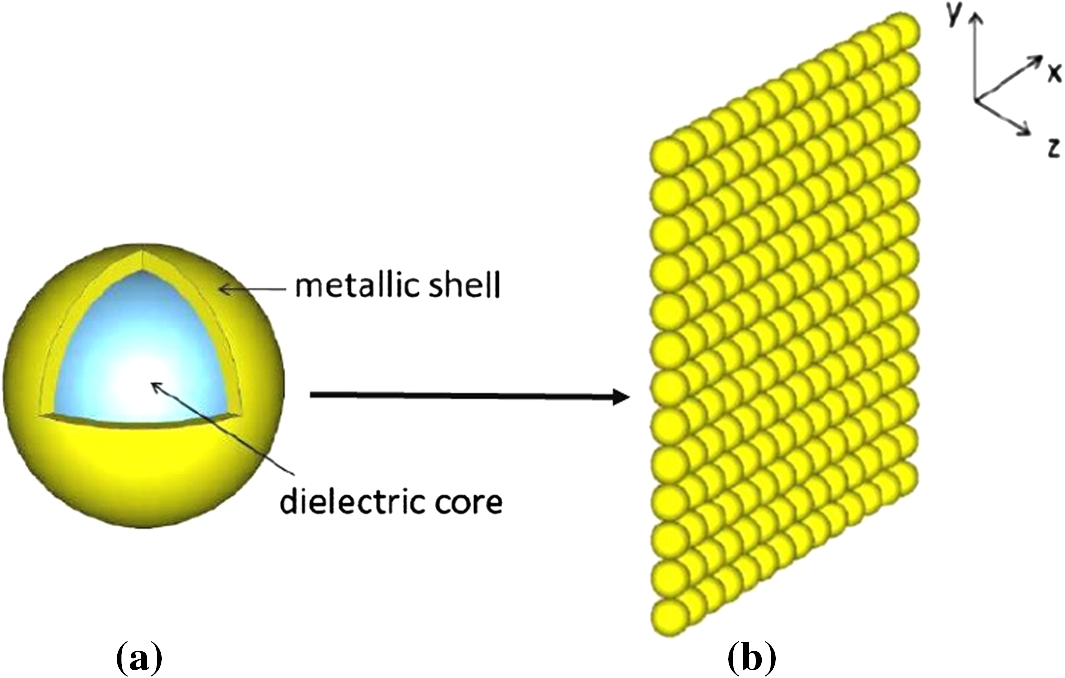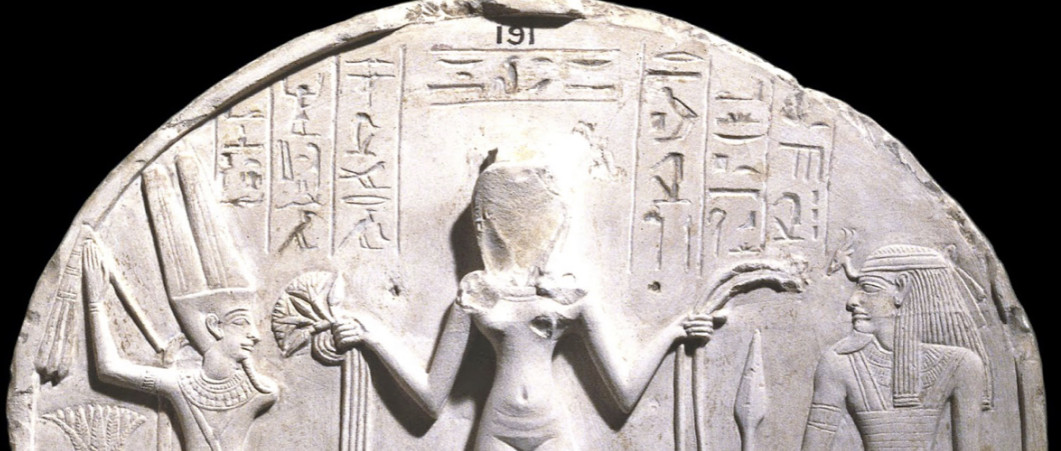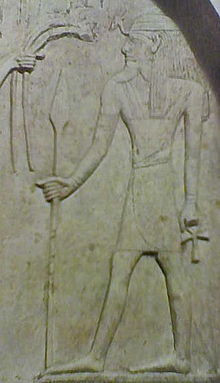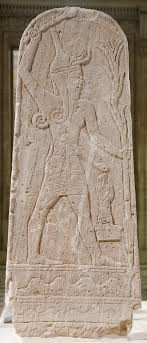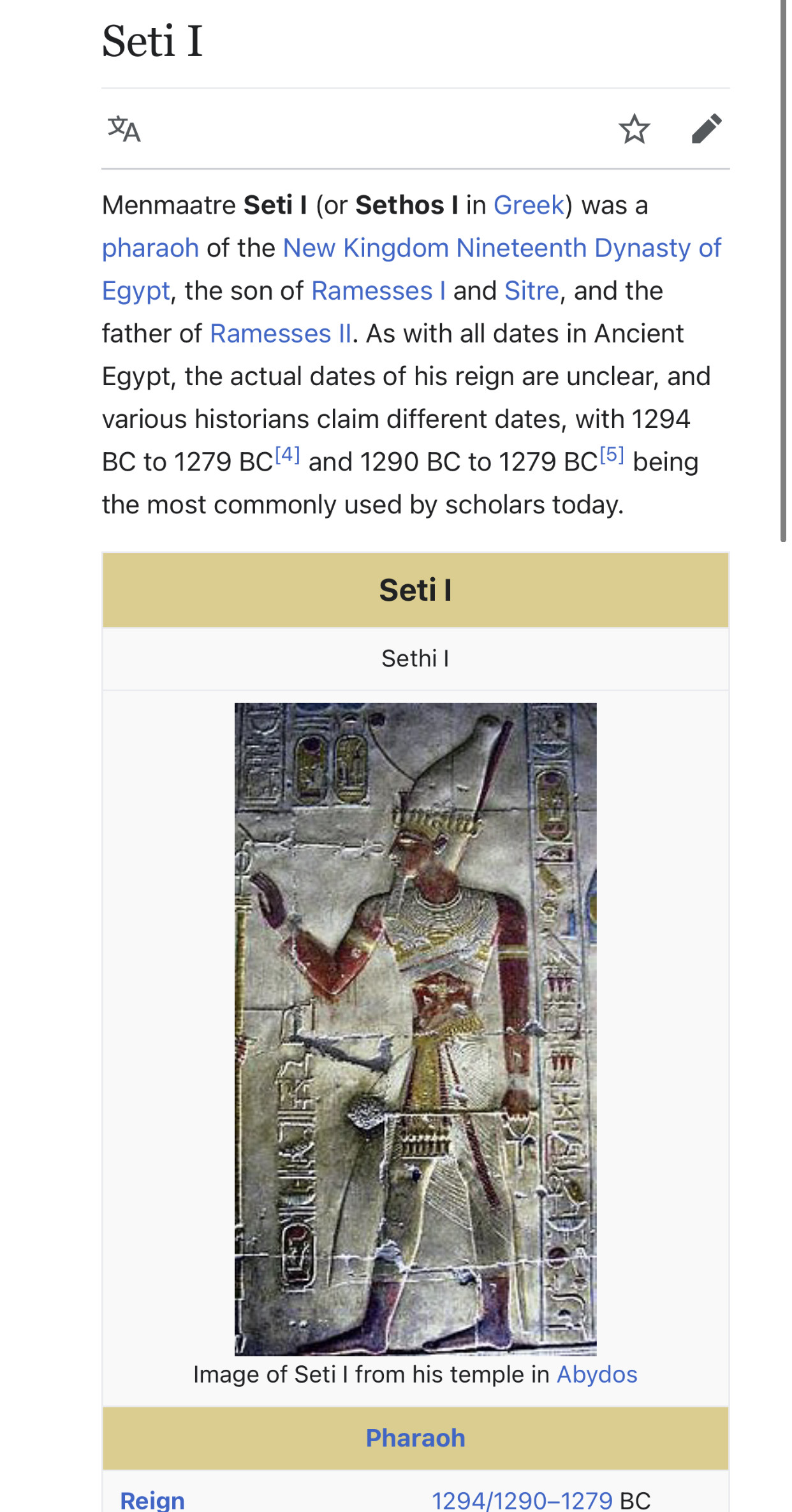The Mac
@TheMac
24 July, 06:26
Notice: Undefined index: tg1tga_access in /home/admin/www/anonup.com/themes/default/apps/timeline/post.phtml on line 396
24 July, 06:28
In response The Mac to his Publication
We will be able to do that without devices soon. I prefer my entanglements to be natural.😉
Notice: Undefined index: tg1tga_access in /home/admin/www/anonup.com/themes/default/apps/timeline/post.phtml on line 396
The Mac
@TheMac
24 July, 07:11
In response Photon 333 to her Publication
Notice: Undefined index: tg1tga_access in /home/admin/www/anonup.com/themes/default/apps/timeline/post.phtml on line 396
The Mac
@TheMac
24 July, 07:19
In response The Mac to his Publication
Notice: Undefined index: tg1tga_access in /home/admin/www/anonup.com/themes/default/apps/timeline/post.phtml on line 396
The Mac
@TheMac
24 July, 07:21
In response The Mac to his Publication
Notice: Undefined index: tg1tga_access in /home/admin/www/anonup.com/themes/default/apps/timeline/post.phtml on line 396
The Mac
@TheMac
24 July, 07:22
In response The Mac to his Publication
Notice: Undefined index: tg1tga_access in /home/admin/www/anonup.com/themes/default/apps/timeline/post.phtml on line 396
The Mac
@TheMac
24 July, 07:23
In response The Mac to his Publication
Notice: Undefined index: tg1tga_access in /home/admin/www/anonup.com/themes/default/apps/timeline/post.phtml on line 396
The Mac
@TheMac
24 July, 07:25
In response The Mac to his Publication
Notice: Undefined index: tg1tga_access in /home/admin/www/anonup.com/themes/default/apps/timeline/post.phtml on line 396
The Mac
@TheMac
24 July, 07:27
In response The Mac to his Publication
Notice: Undefined index: tg1tga_access in /home/admin/www/anonup.com/themes/default/apps/timeline/post.phtml on line 396
The Mac
@TheMac
24 July, 07:29
In response The Mac to his Publication
Notice: Undefined index: tg1tga_access in /home/admin/www/anonup.com/themes/default/apps/timeline/post.phtml on line 396
The Mac
@TheMac
24 July, 07:32
In response The Mac to his Publication
trickle
/ˈtrɪk(ə)l/
verb
1.
(of a liquid) flow in a small stream.
"a solitary tear trickled down her cheek"
/ˈtrɪk(ə)l/
verb
1.
(of a liquid) flow in a small stream.
"a solitary tear trickled down her cheek"
Notice: Undefined index: tg1tga_access in /home/admin/www/anonup.com/themes/default/apps/timeline/post.phtml on line 396
The Variant (I AM RICH)
@IlVarianti
24 July, 07:54
In response The Mac to his Publication
trickle trickle trickle all our neck hairs prickle
Notice: Undefined index: tg1tga_access in /home/admin/www/anonup.com/themes/default/apps/timeline/post.phtml on line 396
The Mac
@TheMac
24 July, 07:59
In response The Variant (I AM RICH) to his Publication
A trick played by the mind; a delusion or illusion.
An act of manipulating someone psychologically, especially to gain an advantage.
An act of manipulating someone psychologically, especially to gain an advantage.
Notice: Undefined index: tg1tga_access in /home/admin/www/anonup.com/themes/default/apps/timeline/post.phtml on line 396
The Variant (I AM RICH)
@IlVarianti
24 July, 08:16
In response The Mac to his Publication
like when obama rubbed pepper in his eye during a sandy hook speech?
Notice: Undefined index: tg1tga_access in /home/admin/www/anonup.com/themes/default/apps/timeline/post.phtml on line 396
The Mac
@TheMac
25 July, 05:27
In response The Variant (I AM RICH) to his Publication

Evolution toward 5G multi-tier cellular wireless networks: An interference management perspective | IEEE Journals & Magazine | IEEE Xplore
The evolving fifth generation (5G) cellular wireless networks are envisioned to overcome the fundamental challenges of existing cellular networks, for example, higher data rates, excellent end-to-end performance, and user-coverage in hot-spots and crowded areas with lower latency, energy consumption..
https://ieeexplore.ieee.org/document/6845056Notice: Undefined index: tg1tga_access in /home/admin/www/anonup.com/themes/default/apps/timeline/post.phtml on line 396
The Variant (I AM RICH)
@IlVarianti
25 July, 05:43
In response The Mac to his Publication
Tiers of the Clown... pepper in the eyes..
Burning Tiers.
Burning Tires!
Burning Tiers.
Burning Tires!
Notice: Undefined index: tg1tga_access in /home/admin/www/anonup.com/themes/default/apps/timeline/post.phtml on line 396
The Variant (I AM RICH)
@IlVarianti
25 July, 05:47
In response The Variant (I AM RICH) to his Publication
Burning Tires now being used as a form of renewable energy. Or rechargeable electric motors through tire friction while you drive.
Everything is connected! wowwww
Everything is connected! wowwww
Notice: Undefined index: tg1tga_access in /home/admin/www/anonup.com/themes/default/apps/timeline/post.phtml on line 396
The Mac
@TheMac
25 July, 07:41
In response The Variant (I AM RICH) to his Publication
Early names of Tyre include Akkadian Ṣurru, Phoenician Ṣūr (𐤑𐤓), and Hebrew Tzór (צוֹר).[10] In Semitic languages, the name of the city means "rock"[11] after the rocky formation on which the town was originally built.
The predominant form in Classical Greek was Týros (Τύρος), which was first seen in the works of Herodotus but may have been adopted considerably earlier.[10] It gave rise to Latin Tyrus, which entered English during the Middle English period as Tyre.[12] The demonym for Tyre is Tyrian, and the inhabitants are Tyrians.
The predominant form in Classical Greek was Týros (Τύρος), which was first seen in the works of Herodotus but may have been adopted considerably earlier.[10] It gave rise to Latin Tyrus, which entered English during the Middle English period as Tyre.[12] The demonym for Tyre is Tyrian, and the inhabitants are Tyrians.
Notice: Undefined index: tg1tga_access in /home/admin/www/anonup.com/themes/default/apps/timeline/post.phtml on line 396
The Mac
@TheMac
25 July, 07:44
In response The Mac to his Publication
From Ancient Greek Τῠ́ρος (Túros).
Pronunciation
IPA(key): /ˈtiɾos/
Hyphenation: Τυ‧ρος
Proper noun
Τύρος • (Týros) f
Tyre (a city in Lebanon)
Pronunciation
IPA(key): /ˈtiɾos/
Hyphenation: Τυ‧ρος
Proper noun
Τύρος • (Týros) f
Tyre (a city in Lebanon)
Notice: Undefined index: tg1tga_access in /home/admin/www/anonup.com/themes/default/apps/timeline/post.phtml on line 396
The Mac
@TheMac
25 July, 07:47
In response The Mac to his Publication
τῠρῐνώτερος
as turinṓteros
as turinṓteros
Notice: Undefined index: tg1tga_access in /home/admin/www/anonup.com/themes/default/apps/timeline/post.phtml on line 396
The Mac
@TheMac
25 July, 07:50
In response The Mac to his Publication
ástur
Adjective
astur (epicene, plural astures)
Asturian
Astur
Latin
Etymology
Various etymologies exist:
From acceptor (“receiver”), with influence from accipiter.
From astēr (“star”), from Ancient Greek ἀστήρ (astḗr).
Adjective
astur (epicene, plural astures)
Asturian
Astur
Latin
Etymology
Various etymologies exist:
From acceptor (“receiver”), with influence from accipiter.
From astēr (“star”), from Ancient Greek ἀστήρ (astḗr).
Notice: Undefined index: tg1tga_access in /home/admin/www/anonup.com/themes/default/apps/timeline/post.phtml on line 396
The Mac
@TheMac
25 July, 07:52
In response The Mac to his Publication
Astarte, also spelled Athtart or Ashtart, great goddess of the ancient Middle East and chief deity of Tyre, Sidon, and Elat, important Mediterranean seaports. Hebrew scholars now feel that the goddess Ashtoreth mentioned so often in the Bible is a deliberate conflation of the Greek name Astarte and the Hebrew word boshet, “shame,” indicating the Hebrews’ contempt for her cult.
Notice: Undefined index: tg1tga_access in /home/admin/www/anonup.com/themes/default/apps/timeline/post.phtml on line 396
The Mac
@TheMac
25 July, 07:57
In response The Mac to his Publication
As·tar·te (ə-stär′tē)
n. Mythology
An ancient Semitic goddess of love and war, being the Phoenician, Syrian, and Canaanite counterpart to Ishtar. In the Bible, her name sometimes appears in the plural, perhaps referring to a group of goddesses. Also called Ashtoreth.
n. Mythology
An ancient Semitic goddess of love and war, being the Phoenician, Syrian, and Canaanite counterpart to Ishtar. In the Bible, her name sometimes appears in the plural, perhaps referring to a group of goddesses. Also called Ashtoreth.
Notice: Undefined index: tg1tga_access in /home/admin/www/anonup.com/themes/default/apps/timeline/post.phtml on line 396
The Mac
@TheMac
25 July, 07:59
In response The Mac to his Publication
Astarte (æˈstɑːtɪ)
n
(Other Non-Christian Religions) a fertility goddess worshipped by the Phoenicians: identified with Ashtoreth of the Hebrews and Ishtar of the Babylonians and Assyrians
n
(Other Non-Christian Religions) a fertility goddess worshipped by the Phoenicians: identified with Ashtoreth of the Hebrews and Ishtar of the Babylonians and Assyrians
Notice: Undefined index: tg1tga_access in /home/admin/www/anonup.com/themes/default/apps/timeline/post.phtml on line 396
The Mac
@TheMac
25 July, 08:04
In response The Mac to his Publication
British Museum EA 191, upper register of limestone stele of chief craftsman Qeh. Naked goddess identified as ‘Ke(d)eshet, lady of heaven’ flanked by the ithyphallic Egyptian god Min and Syro-Palestinian god Reshep. Deir el-Medina (Dynasty 19). Photograph © Trustees of the British Museum.
“Her name Qdš(-t) simply means ‘holy’. As such, it can be attached to almost any goddess, including the whole of the A-team: Anat, Astarte, Asherah and Athirat. The question is: did there exist an independent goddess named Qedeshet at all? She is not known from any Canaanite or Ugaritic texts or inscriptions. Rather, she only appears as a named goddess in Egypt. There, she is honoured with such typical titles as ‘Lady of heaven’ and ‘Mistress of all the gods’ — which are not specific to her but could equally apply to any goddess in Egypt
“Her name Qdš(-t) simply means ‘holy’. As such, it can be attached to almost any goddess, including the whole of the A-team: Anat, Astarte, Asherah and Athirat. The question is: did there exist an independent goddess named Qedeshet at all? She is not known from any Canaanite or Ugaritic texts or inscriptions. Rather, she only appears as a named goddess in Egypt. There, she is honoured with such typical titles as ‘Lady of heaven’ and ‘Mistress of all the gods’ — which are not specific to her but could equally apply to any goddess in Egypt
Notice: Undefined index: tg1tga_access in /home/admin/www/anonup.com/themes/default/apps/timeline/post.phtml on line 396
The Mac
@TheMac
25 July, 08:08
In response The Mac to his Publication
Resheph (also Reshef and many other variants; Phoenician: 𐤓𐤔𐤐, ršp; Eblaite Rašap, Egyptian ršpw) was a deity associated with plague (or a personification of plague), either war or strong protection,[1] and sometimes thunder in ancient Canaanite religion. The originally Eblaite and Canaanite god was then more famously adopted into ancient Egyptian religion in the late Bronze Age during the Eighteenth Dynasty of Egypt (late fifteenth century BC), also becoming associated with horses and chariots.
Notice: Undefined index: tg1tga_access in /home/admin/www/anonup.com/themes/default/apps/timeline/post.phtml on line 396
The Mac
@TheMac
25 July, 08:21
In response The Mac to his Publication
Resheph is known by a multitude of names, including Rahshaf, Rasap, Rashap, Resep, Reshef, Reshpu, Rapha, Repheth, and others that are not standardized.
In Biblical Hebrew, רֶשֶׁף resheph is a noun interpreted as "flame, lightning" but also "burning fever, plague, pestilence".
In Biblical Hebrew, רֶשֶׁף resheph is a noun interpreted as "flame, lightning" but also "burning fever, plague, pestilence".
Notice: Undefined index: tg1tga_access in /home/admin/www/anonup.com/themes/default/apps/timeline/post.phtml on line 396
The Mac
@TheMac
25 July, 08:23
In response The Mac to his Publication
Egyptian limestone stele depicting Qetesh standing on a lion and wearing the headdress of Hathor, flanked by Min (left) and Resheph (right)
Notice: Undefined index: tg1tga_access in /home/admin/www/anonup.com/themes/default/apps/timeline/post.phtml on line 396
The Mac
@TheMac
25 July, 08:23
In response The Mac to his Publication
Notice: Undefined index: tg1tga_access in /home/admin/www/anonup.com/themes/default/apps/timeline/post.phtml on line 396
The Mac
@TheMac
25 July, 08:25
In response The Mac to his Publication
Probably introduced in Egypt by the Hyksos, Resheph was not assimilated into the Egyptian pantheon until the New Kingdom's Eighteenth Dynasty along with other Near Eastern deities. His consort was Itum.[20][21] He was frequently associated with Seth and Montu, other deities related to war and plague, but he also formed a triad with Min and Qetesh. Qetesh was connected with Hathor, but not synonymous with her.
He was usually depicted anthropomorphically, as a man brandishing a weapon, sporting a typical Syrian beard, and wearing the white crown of Egypt and/or a gazelle’s head on his own.[20][21] A temple dedicated to him is attested in Memphis, but he was likely worshipped in many Nile Delta regions. His cult survived well into the Ptolemaic Period.
He was usually depicted anthropomorphically, as a man brandishing a weapon, sporting a typical Syrian beard, and wearing the white crown of Egypt and/or a gazelle’s head on his own.[20][21] A temple dedicated to him is attested in Memphis, but he was likely worshipped in many Nile Delta regions. His cult survived well into the Ptolemaic Period.
Notice: Undefined index: tg1tga_access in /home/admin/www/anonup.com/themes/default/apps/timeline/post.phtml on line 396
The Mac
@TheMac
25 July, 08:30
In response The Mac to his Publication
During the rule of the Hyksos invaders (c. 1630–1521 BCE), Seth was worshipped at their capital, Avaris, in the northeastern Nile River delta, and was identified with the Canaanite storm god Baal. During the New Kingdom (1539–c. 1075 BCE), Seth was esteemed as a martial god who could sow discord among Egypt’s enemies. The Ramesside pharaohs (1292–c. 1075 BCE), originating in the northeastern delta, ranked him among the great gods of Egypt, used his name in their personal names (Seti I and Seti II, Setnakht), and promoted the image of Seth as the protector of Re in the prow of his bark, slaying Re’s enemy, Apopis. Seth also joined Amon, Re, and Ptah as the fourth of the principal gods of the cosmos.
Notice: Undefined index: tg1tga_access in /home/admin/www/anonup.com/themes/default/apps/timeline/post.phtml on line 396
The Mac
@TheMac
25 July, 08:32
In response The Mac to his Publication
Resheph was one of the Western Semitic gods adopted by the Hurrians (other examples include Ishara, Hebat and Eblaite war god Aštabi). He appears in Hurrian texts under the name Aršappa or Iršappa, often with the epithet "(tutelary god) of the market," and was among the gods incorporated into the pantheons of Samuha and the Hittite capital Hattusa under the influence of Hurrian religion.
Notice: Undefined index: tg1tga_access in /home/admin/www/anonup.com/themes/default/apps/timeline/post.phtml on line 396
The Mac
@TheMac
25 July, 08:34
In response The Mac to his Publication
Notice: Undefined index: tg1tga_access in /home/admin/www/anonup.com/themes/default/apps/timeline/post.phtml on line 396
The Mac
@TheMac
25 July, 08:35
In response The Mac to his Publication
Notice: Undefined index: tg1tga_access in /home/admin/www/anonup.com/themes/default/apps/timeline/post.phtml on line 396
The Mac
@TheMac
25 July, 08:40
In response The Mac to his Publication
The name 'Seti' means "of Set", which indicates that he was consecrated to the god Set (also termed "Sutekh" or "Seth"). As with most pharaohs, Seti had several names. Upon his ascension, he took the prenomen "mn-m3‘t-r‘ ", usually vocalized as Menmaatre, in Egyptian, which means "Established is the Justice of Re."[1] His better known nomen, or birth name, is transliterated as "sty mry-n-ptḥ" or Sety Merenptah, meaning "Man of Set, beloved of Ptah". Manetho incorrectly considered him to be the founder of the 19th Dynasty, and gave him a reign length of 55 years, though no evidence has ever been found for so long a reign.
Notice: Undefined index: tg1tga_access in /home/admin/www/anonup.com/themes/default/apps/timeline/post.phtml on line 396
The Mac
@TheMac
25 July, 08:43
In response The Mac to his Publication
In the Northwest Semitic languages—Ugaritic, Phoenician, Hebrew, Amorite, and Aramaic—the word baʿal signified "owner" and, by extension, "lord",[12] a "master", or "husband".[15][16] Cognates include the Akkadian Bēlu (𒂗),[c] Amharic bal (ባል),[17] and Arabic baʿl (بَعْل). Báʿal (בַּעַל) and baʿl still serve as the words for "husband" in modern Hebrew and Arabic respectively. They also appear in some contexts concerning the ownership of things or possession of traits.
The feminine form is baʿalah (Hebrew: בַּעֲלָה;[18] Arabic: بَعْلَة), meaning "mistress" in the sense of a female owner or lady of the house[18] and still serving as a rare word for "wife".[19]
Suggestions in early modern scholarship also included comparison with the Celtic god Belenus.
The feminine form is baʿalah (Hebrew: בַּעֲלָה;[18] Arabic: بَعْلَة), meaning "mistress" in the sense of a female owner or lady of the house[18] and still serving as a rare word for "wife".[19]
Suggestions in early modern scholarship also included comparison with the Celtic god Belenus.
Notice: Undefined index: tg1tga_access in /home/admin/www/anonup.com/themes/default/apps/timeline/post.phtml on line 396
The Mac
@TheMac
25 July, 08:49
In response The Mac to his Publication
Belenus (also Belenos, Belinus, Bel, Beli Mawr) is a sun god from Celtic mythology and, in the 3rd century, the patron deity of the Italian city of Aquileia. Called the "Fair Shining One" (or "The Shining God"), he was one of the most ancient and most-widely worshiped Celtic deities and is associated with the ancient fire festival and modern Sabbat Beltane.[1] He was associated with the horse (as shown by the clay horse figurine offerings at Belenos's Sainte-Sabine shrine in Burgundy) and also the wheel. Perhaps like Apollo, with whom he became identified in the Augustan History,[2] Belenos was thought to ride the Sun across the sky in a horse-drawn chariot.
Notice: Undefined index: tg1tga_access in /home/admin/www/anonup.com/themes/default/apps/timeline/post.phtml on line 396
The Mac
@TheMac
25 July, 08:52
In response The Mac to his Publication
There are 51 known inscriptions dedicated to Belenus, mainly concentrated in Cisalpine Gaul (Aquileia/Carni), Noricum and Gallia Narbonensis, but also extend far beyond into Celtic Britain and Iberia.[2][4][5] Images of Belenus sometimes show him to be accompanied by a female, thought to be the Gaulish deity Belisama.[5] He may also have been accompanied by a female deity named Beléna, Beléstis, Beléstis Augústa, Beléstris or Belínca, a deity of light and health.
Notice: Undefined index: tg1tga_access in /home/admin/www/anonup.com/themes/default/apps/timeline/post.phtml on line 396
The 1350 BC Amarna letters use EN for bêlu, though not exclusively. The more common spelling is mostly 'be' + 'li', to make "bêlí", or its equivalent. Some example letters using cuneiform 'EN' are letters EA (for 'El Amarna') 252, EA 254, and EA 282,[3] titled: "A demand for recognition", by Abimilku; "Neither rebel or delinquent (2)", by Labayu; and "Alone", by Shuwardata.
Most of the uses are in the letter introduction, formulaic addresses to the pharaoh, stating typically to effect:
"To the King (pharaoh), Lord-mine, (speaking) thus...." EA 254
Bodies of the letters also repeat the phraseology of "King, my Lord", sometimes doubly as in letter EA 34, (using be-li, as bêlu), "The pharaoh's reproach answered", by the King of Alashiya.
Most of the uses are in the letter introduction, formulaic addresses to the pharaoh, stating typically to effect:
"To the King (pharaoh), Lord-mine, (speaking) thus...." EA 254
Bodies of the letters also repeat the phraseology of "King, my Lord", sometimes doubly as in letter EA 34, (using be-li, as bêlu), "The pharaoh's reproach answered", by the King of Alashiya.
09:01 AM - Jul 25, 2021
In response The Mac to his Publication
Only people mentioned by TheMac in this post can reply
The Mac
@TheMac
25 July, 09:03
In response The Mac to his Publication
Bel (/ˈbeɪl/; from Akkadian bēlu), signifying "lord" or "master", is a title rather than a genuine name, applied to various gods in the Mesopotamian religion of Akkad, Assyria and Babylonia. The feminine form is Belit 'Lady, Mistress'. Bel is represented in Greek as Belos and in Latin as Belus. Linguistically Bel is an East Semitic form cognate with the Northwest Semitic Baal with the same meaning.
Early translators of Akkadian believed that the ideogram for the god called in Sumerian Enlil was to be read as Bel in Akkadian. Current scholarship holds this as incorrect, but one finds Bel used in referring to Enlil in older translations and discussions.[1]
Early translators of Akkadian believed that the ideogram for the god called in Sumerian Enlil was to be read as Bel in Akkadian. Current scholarship holds this as incorrect, but one finds Bel used in referring to Enlil in older translations and discussions.[1]
Notice: Undefined index: tg1tga_access in /home/admin/www/anonup.com/themes/default/apps/timeline/post.phtml on line 396
The Mac
@TheMac
25 July, 09:03
In response The Mac to his Publication
Bel became especially used for the Babylonian god Marduk and when found in Assyrian and neo-Babylonian personal names or mentioned in inscriptions in a Mesopotamian context it can usually be taken as referring to Marduk and no other god. Similarly Bêlit mostly refers to Bel Marduk's spouse Sarpanit. However, Marduk's mother, the Sumerian goddess called Ninhursag, Damkina, Ninmah and other names in Sumerian, was often known as Belit-ili "Lady of the Gods" in Akkadian.
Notice: Undefined index: tg1tga_access in /home/admin/www/anonup.com/themes/default/apps/timeline/post.phtml on line 396






